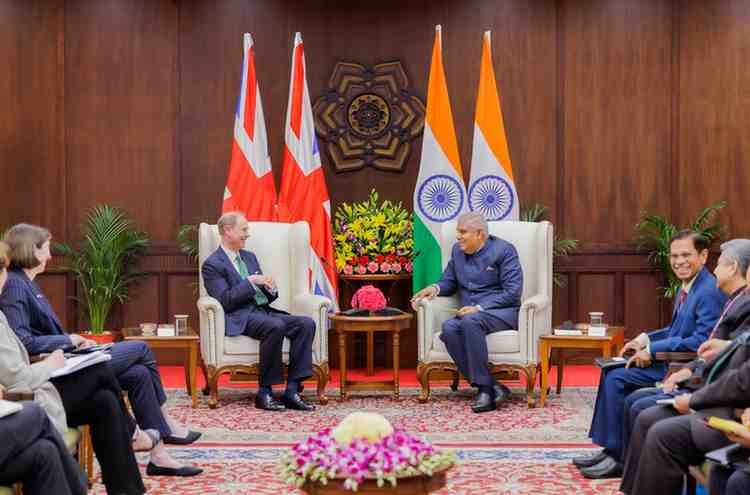In a significant move to bolster defence ties, UK Defence Minister Lord Vernon Coaker inaugurated the UK-India Defence Partnership Pavilion, establishing a dedicated programme office within the UK’s Ministry of Defence. This initiative aims to serve as a comprehensive resource for enhancing bilateral defence collaboration between the two nations.
During his visit to India, Lord Coaker announced an expansion of cooperation on next-generation weaponry, highlighted by a new contract between Thales and Bharat Dynamics Limited (BDL). This agreement will facilitate the delivery of Laser Beam Riding MANPADs (LBRM), with an initial supply of High Velocity Missiles (STARStreak) and their launchers expected to be delivered within the year. This contract marks a pivotal advancement in UK-Indian defence cooperation, particularly in the crucial domain of air defence.
In his remarks, Lord Coaker expressed enthusiasm about the ongoing defence relationship, stating, “It was a pleasure to visit India and continue to grow our already strong defence relationship. Our Defence Partnership and the UK-India Defence Partnership Pavilion will help strengthen our cooperation further, supporting economic growth in both our countries and India’s Atmanirbhar ambition.”
He emphasized the potential for collaboration in next-generation capabilities, underscoring the benefits that both nations can unlock by working together.
Following the initial LBRM contract, Thales and BDL are set to collaborate on the development of Lightweight Multirole Missiles (LMM).
This partnership not only enhances the relationship between Indian and British industries but also positions BDL and Indian manufacturers as integral components of Thales’ global supply chain. The collaboration aims to address shared security challenges, create job opportunities in both countries, and enhance interoperability between their armed forces.
Lindy Cameron, the British High Commissioner to India, highlighted India’s strides towards self-reliance in defence capabilities, stating, “India is taking significant steps in its journey to become Atmanirbhar in its defence capabilities.
The UK is really looking forward to working with India as a partner of choice in supporting this ambition: collaborating on defence technologies lies at the heart of this.” She described the agreements as landmark developments that would foster economic growth and enhance joint security.
In a related initiative, MBDA UK and BDL are collaborating on the establishment of a pioneering Advanced Short-Range Air to Air Missile (ASRAAM) assembly and testing facility in Hyderabad. This facility aims to enhance the capabilities of India’s current fleet of fighter jets while also positioning India as a potential exporter of advanced missile technology.
On the maritime front, the UK and India have signed a Statement of Intent to design and develop an Integrated Full Electric Propulsion (IFEP) system for India’s next-generation Landing Platform Dock (LPD) fleet.
As part of this initiative, GE Vernova and BHEL are working together to create India’s first maritime Land Based Testing Facility, with the goal of delivering the LPD by 2030.
The strengthening of the UK-India partnership is expected to directly support India’s ‘Atmanirbhar Bharat’ initiative, which aims to enhance self-reliance in various sectors, including defence.
This collaboration aligns with the UK Government’s growth agenda and its Plan for Change, reflecting a shared commitment to mutual security and economic development.
As both nations continue to deepen their defence ties, the recent agreements and initiatives signify a promising future for UK-India relations, with the potential to address regional security challenges and foster economic growth through collaborative efforts in defence technology and manufacturing.








